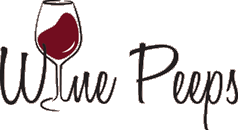“Reserve†doesn’t necessarily mean “betterâ€
By Kori ~ April 28th, 2008.
“The differences between wines are genetically inherited: the vines and the vineyard are the bloodline. They are also inherited: when the vine is pruned, as the grapes ripen, when they are picked, as they are fermented and matured and bottled and stored again.†–Hugh Johnson, A Life Uncorked
On two recent occasions, I have been asked about “reserve†wines. In both instances, the person asking the question logically assumed that wines labeled “reserve†must be better than those that are not. However, the word “reserve†on a bottle of wine doesn’t always mean that it is better than any other bottle from that vintner. In some cases it does, but in many cases it does not.
In 1999, Washington became the first state (and I believe still the only one) to define standards for “reserve†wines. According to a measure adopted by the Washington Wine Quality Alliance, the word “reserve†can be used for no more than 10% of a winery’s production or up to 3,000 cases and the wine must be of higher quality than most wines made by that winery. Thus, “reserve†wines in Washington (at least from wineries that adhere to the WWQA standards) truly are the best of the best. In other states and countries, the use of the word “reserve†is mostly a marketing gimmick.
Other terms on labels that sometimes cause confusion when used to imply superior quality are “estate grown†or “estate bottled.†In reality, estate vineyards are simply vineyards that are owned by the winery; therefore, “estate grown†grapes come from such vineyards.
“Estate bottled†simply means that the vineyard and the winery are located in the same viticultural region and the wine was bottled at the winery that owns or has direct control of the vineyard. There is nothing in this term that connotates superior quality.
Buyer beware!
What do you think the criteria should be for a wine to be labeled “reserve�
Filed under: General Wine Information

 Wine Peeps is an independent wine blog dedicated to helping you get the most bang for your buck in wine. We do this through blind tastings of wine from around the world and calculations of
Wine Peeps is an independent wine blog dedicated to helping you get the most bang for your buck in wine. We do this through blind tastings of wine from around the world and calculations of 











Even with Washington having Reserve labeling standards, there is no guarantee you are getting a better wine with the reserve. A great example of this is Boudreaux Winery’s Cab Sauv and Cab Sauv Reserve. The regular Cab has so much character that doesn’t seem to show in the big, but well-balance Reserve, not to mention that the regular Cab goes for $40 and the Reserve $100. The Reserve was tasted at Gary Vaynerchuk’s live taping of Wine Library TV during Taste Washington’s seminar day. Gary called out Rob Newsom, who was in the audience, for producing an overpriced wine that didn’t meet the quality of his regular bottling. I agreed.